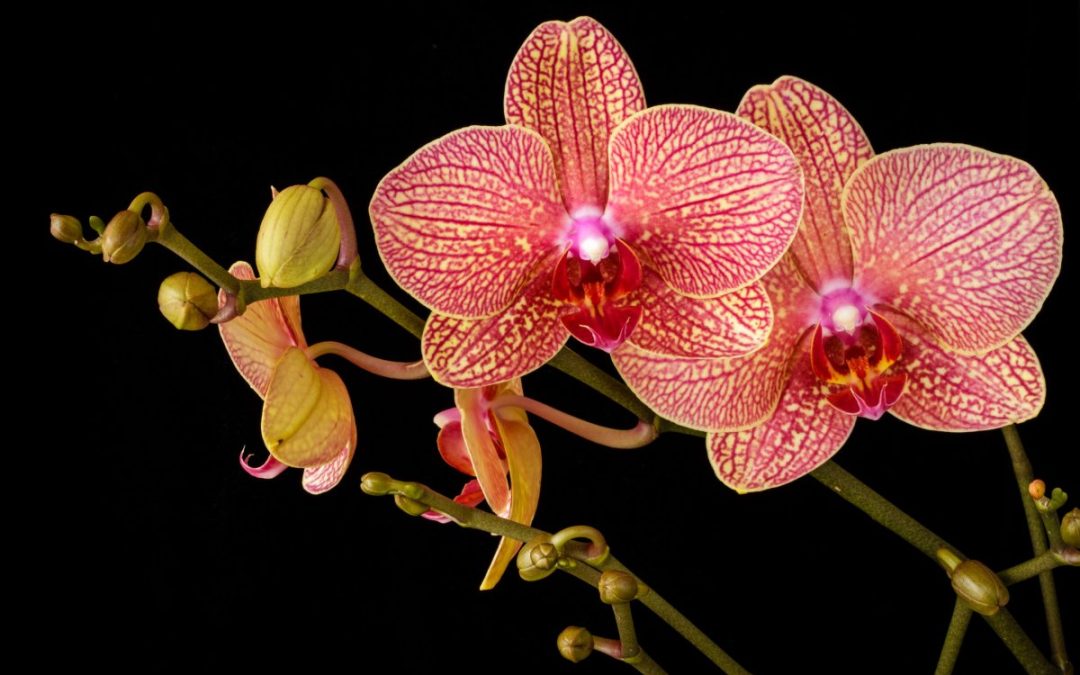
Our editors have independently chosen the products listed on this page. If you purchase something mentioned in this article, we may earn a small commission.
August 20, 2022 — 15:28 PM
Orchids are notorious for being difficult to take care of, but for many plant-lovers, their striking beauty and elegance makes them worth the hassle—plus they have significant spiritual meanings, as well. Here’s what to know about the meaning this flower, plus how to actually take care of it.
What the orchid flower symbolizes
Orchids have been revered by different cultures around the world for centuries, from ancient China and Japan, to ancient Greece and throughout Europe, and even in Aztec and Incan traditions.
As plant and animal spiritualist Jordana Van tells mbg, there are over 25,000 varieties of orchids, and since they’re a focal point of several different cultures, a “general interpretation of its symbolism is challenging as there is considerable variety in its messages.”
That said, there are some more pervasive ideas and themes when it comes to how different people around the world view this striking flower. For one thing, Van notes, many cultures associate orchids with love, romance, sex, and fertility. “In fact,” she says, “the word ‘orchid’ is a derivative of the Greek word orchis, meaning testicle.”
And of course, this flower’s beauty is enough to attract plenty of admiration and attention, with many cultures simply celebrating it for its appearance. “Machu Picchu is known for its many breathtaking species of orchids, each of which, in addition to its unique beauty, has a different spiritual or medicinal purpose,” Van says, adding that in China, “due to their delicate fragrance and graceful figure, orchids are associated with ideal feminine beauty.”
Orchids have also basically always been expensive—and are still a pricier flower option today. As such, Van says, they’ve long been associated with wealth.
Before we dive into meanings based on color, here’s a quick glance at what orchids can symbolize, generally:
- Fertility
- Sex (and/or lust)
- Wealth
- Luxury (and/or consumerism)
- Royalty
- Prosperity
- Beauty
- Perfection
- Tender care
- Complexity
How it varies based on color
According to Van, it’s important to keep in mind that different cultures around the world interpret colors differently, and there are no universally set meanings to colors. “It is critical to consider someone’s background before gifting them a particularly colored orchid,” she adds. With that in mind, here are some common meanings of particular orchid colors around the world.
sleep support+
Set yourself up for success with a good night’s sleep.*

The color white, if you’re from the U.S., has a long standing association with purity, rebirth, heaven, angels, spirituality, and simplicity, Van says. In China, however, the color white represents death and ghosts, and anything white (flowers included) should never be given as gifts.
Red is another popular orchid color, often linked with passion, sex, lust, and love, in the western world. “We readily recognize a bouquet of red roses, for example, as indicative of someone’s romantic interest,” Van explains, adding that to the Japanese, red represents peace and prosperity, while to the Chinese, it denotes happiness and luck.
Purple has traditionally been associated with luxury and even royalty in many cultures, given that it was a difficult pigment to achieve in art, clothing, etc. In the case of orchids, however, those ideas can still apply, but Van notes that in China, purple as actually used to express love the way red is here in the U.S., and in Japan, it’s considered the color of warriors, associated with nobility and strength.
And speaking of royalty, in China, it’s actually represented by the color yellow, as opposed to purple, Van says. In the States, however, we typically associated yellow with happiness, friendship, and general positivity.
As aforementioned, orchids are kind of notorious for being finicky. They require careful attention and tender care, with Van noting they need far more precise conditions to remain healthy and bloom than many other plants.
Here are her tips for caring for yours.
Potting & air circulation:
According to Van, among the first of an orchid’s unique needs is the medium in which it grows. “Approximately 70% of orchids are what are known as epiphytes. These are plants that grow anchored to other plants, which is why orchids are often found growing high in the canopy of trees,” she explains.
As such, these plants don’t typically do well potted in regular soil, because it holds too much water and lacks air circulation. “Bark chips are often used as potting mediums, or moss,” Van tells mbg, noting that they also like a “buoyant” environment, in terms of air circulation. Basically this just means the air is light and constantly moving, which can be achieved with an open window or a fan—just be sure to mind the temperature, as well.
Most orchids do not sit in soil like other plants, so their watering requirements can be a bit complicated. “In the case of the most common popular orchid variety in the home, the Phalaenopsis, or moth orchid, it should be watered approximately once a week if potted in bark,” Van says. She adds to be sure to check how much water is actually still in the pot if it is potted in moss, using a bamboo skewer.
“When watering the plant, it is important to avoid salt-softened or distilled water. The water must be tepid, as cold water will shock the plant, and run through the pot for some time to make sure the plant is thoroughly soaked—and it must be allowed to drain completely,” she tells mbg.
Other tips to keep in mind, she adds, include blotting the top of your growing medium with a paper towel to prevent any fungus or bacteria growth, and maintaining proper humidity to keep your orchid happy.
As you may have guessed, where you live is going to play a large role in your orchid’s lighting needs, as will your particular species of orchid. Again, moth orchids are the most common at-home orchid, and Van says they need 14 to to 16 hours of low light, preferably placed in an east window, or in a south or west window protected by a sheer curtain.
“If moth orchids receive too much light, their leaves will turn red and even burn, indicating that they have received too much illumination. If they do not receive enough, their leaves will turn dark, and they will refuse to bloom,” Van explains, adding a mature moth orchid can bloom two or three times a year, with blossoms lasting up to six months—but only if properly cared for.
The bottom line is, while orchids are definitely not the easiest flowers to take care of, they are undoubtedly beautiful and unique. With a little patience, careful attention, and perhaps some trial and error, you can welcome orchid’s beauty and symbolism into your own home.
Want to learn how feng shui can help you create a high-vibe home and set powerful intentions to manifest your dreams? This is feng shui the modern way – no superstitions, all good vibes. Click here to register for a free session with Dana that will give you 3 tips to transform your home today!
Sex life in retrograde?
Your FREE Astrology Sex, Love and Attraction Guide.
You are now subscribed
Be on the lookout for a welcome email in your inbox!
https://www.mindbodygreen.com/articles/orchid-symbolism-meanings-behind-flower

